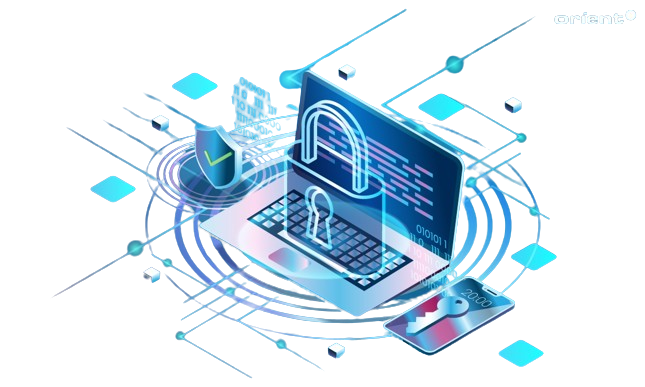What is Cyber security strategey
A cybersecurity strategy is a comprehensive plan that outlines an organization's approach to protecting its digital assets, systems, networks, and data from cyber threats. It involves identifying, assessing, and mitigating cybersecurity risks to ensure the confidentiality, integrity, and availability of information assets.

Implementing a Cyber Security Strategy
Developing a robust cybersecurity strategy is crucial for organizations to protect their sensitive data, systems, and operations from cyber threats
Developing a cybersecurity strategy involves a systematic approach to understanding, assessing, and mitigating risks to your organization’s information assets. the implementing comes after a clear strategic plan with step-by-step guide to help you deploy a comprehensive cybersecurity
How To Develop a Cyber Security Strategy
Establish Leadership Support:
- Gain buy-in from senior management and secure their commitment to prioritize cybersecurity within the organization.
- Ensure that leadership understands the potential impact of cyber threats on the organization’s reputation, finances, and operations.
Understand Your Assets:
- Identify and categorize your organization’s critical assets, including data, systems, networks, and intellectual property.
- Determine the value and importance of each asset to prioritize protection efforts.
Assess Risks:
- Conduct a comprehensive risk assessment to identify potential cybersecurity threats and vulnerabilities.
- Evaluate the likelihood and potential impact of each threat to prioritize mitigation efforts.
- Consider both internal and external threats, including malicious actors, insider threats, and natural disasters.
Define Objectives and Goals:
- Based on the risk assessment, establish clear cybersecurity objectives and goals aligned with the organization’s overall mission and strategic objectives.
- Define specific, measurable, achievable, relevant, and time-bound (SMART) goals to guide your cybersecurity efforts.
Develop Policies and Procedures:
- Create cybersecurity policies and procedures that outline expectations, responsibilities, and acceptable behaviors for employees, contractors, and third parties.
- Address areas such as data protection, access controls, incident response, and employee training.
- Ensure policies are regularly reviewed and updated to reflect changes in technology and threat landscape.
Implement Security Controls:
- Select and deploy appropriate security controls and technologies to mitigate identified risks.
- Consider measures such as firewalls, intrusion detection systems (IDS), encryption, endpoint protection, and access controls.
- Implement a defense-in-depth approach to layer security controls and provide multiple layers of protection.
Provide Training and Awareness:
- Educate employees about cybersecurity risks, best practices, and their role in maintaining security.
- Offer regular training sessions, workshops, and awareness campaigns to reinforce cybersecurity awareness and promote a culture of security.
Establish Incident Response Plan:
- Develop a formal incident response plan that outlines procedures for detecting, responding to, and recovering from cybersecurity incidents.
- Define roles and responsibilities for incident response team members and establish communication protocols.
- Conduct regular tabletop exercises and simulations to test the effectiveness of the incident response
Monitor and Measure Performance:
- Implement monitoring tools and processes to continuously assess the effectiveness of cybersecurity controls and detect potential security incidents.
- Establish key performance indicators (KPIs) and metrics to track progress towards cybersecurity goals and objectives.
- Regularly review and analyze security logs, incident reports, and performance metrics to identify areas for improvement.
Continuous Improvement:
- Regularly review and update the cybersecurity strategy in response to changes in the threat landscape, technology, or business environment.
- Learn from security incidents and incorporate lessons learned into future cybersecurity efforts.
- Engage in information sharing and collaboration with industry peers and cybersecurity professionals to stay informed about emerging threats and best practices.
infovaly offers and follow steps by steps to process and and adapting them to fit your organization’s specific needs and priorities, you can develop a robust cybersecurity strategy to protect your information assets and mitigate cyber risks effectively

Risk Assessment and Management:
- Identify and prioritize assets: Determine what data, systems, and processes are most critical to your organization.
- Conduct regular risk assessments: Assess potential vulnerabilities and threats to your assets.
- Develop a risk management plan: Implement measures to mitigate identified risks, considering factors like likelihood and impact.
Security Policies and Procedures:
- Establish clear security policies: Define rules and guidelines for employees regarding data handling, access controls, password management, etc.
- Enforce compliance: Ensure that employees understand and adhere to security policies through training, monitoring, and enforcement mechanisms.
Access Control:
- Implement least privilege access: Limit user access to only what is necessary for their roles.
- Utilize strong authentication methods: Incorporate multi-factor authentication (MFA) where possible to enhance security.
Data Protection:
- Encrypt sensitive data: Use encryption technologies to protect data both at rest and in transit.
- Implement data loss prevention (DLP) measures: Monitor and control data movement to prevent unauthorized access or leakage.
Incident Response and Disaster Recovery:
- Develop an incident response plan: Establish procedures for detecting, responding to, and recovering from cybersecurity incidents.
- Test your plan regularly: Conduct drills and simulations to ensure your team is prepared to handle real-world incidents.
Outline a comprehensive cybersecurity strategy

Security Awareness Training:
- Educate employees: Provide regular training sessions to increase awareness of common cyber threats and best practices for staying secure.
- Phishing awareness: Teach employees how to recognize and report phishing attempts and other social engineering tactics.
Continuous Monitoring and Improvement:
- Deploy security monitoring tools: Utilize intrusion detection systems (IDS), security information and event management (SIEM) systems, and other monitoring tools to detect and respond to threats in real-time.
- Regularly update security measures: Stay current with security patches, updates, and industry best practices to adapt to evolving threats.
Vendor and Supply Chain Security:
- Assess third-party risks: Evaluate the cybersecurity posture of vendors and partners who have access to your systems or data.
- Implement security requirements: Establish contractual agreements and security standards for vendors to follow.
Regulatory Compliance:
- Understand relevant regulations: Ensure compliance with laws and regulations applicable to your industry (e.g., GDPR, HIPAA, PCI DSS).
- Maintain documentation: Keep records of security policies, procedures, and compliance efforts for audits and regulatory purposes.
Board and Executive Oversight:
- Gain leadership buy-in: Educate executives and the board of directors about cybersecurity risks and the importance of investing in security measures.
- Provide regular updates: Keep leadership informed about the organization’s cybersecurity posture, incidents, and mitigation efforts.
infovaly help to develop a strong cybersecurity strategy of your organization to safeguard your assets and operations. Regular review and adaptation are essential to stay ahead of evolving cyber threats.

